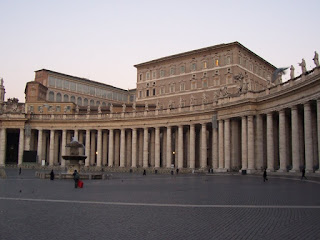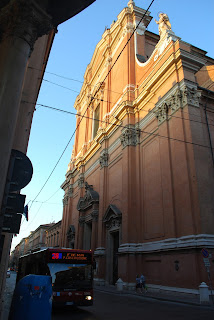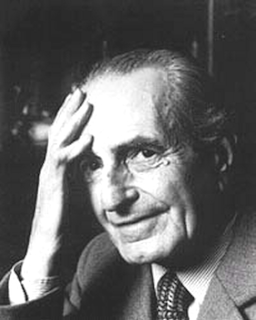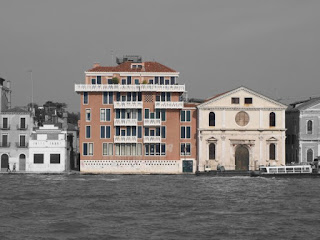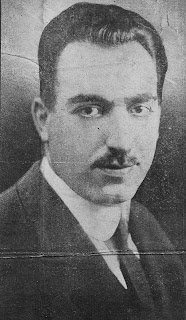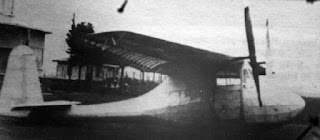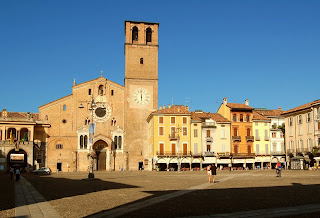Bologna cardinal seen as great intellectual leader
 |
| Pierre Subleyras's portrait of Benedict XIV, painted in the early 1700s, is in the Palace of Versailles |
Prospero Lorenzo Lambertini,
who would in his later years become Pope Benedict XIV, was born on this day in
1675 in Bologna.
Lambertini was a man of
considerable intellect, considered one of the most erudite men of his time and arguably
the greatest scholar of all the popes.
He promoted scientific
learning, the baroque arts, the reinvigoration of the philosophy of Saint
Thomas Aquinas and the study of the human form.
He was Bishop of Ancona at
the age of 52, Archbishop of Bologna at 56 and Pope at 65 but at no time did he
consider his elevation to these posts an honour upon which to congratulate
himself. He saw them as the opportunity
to do good and tackled each job with zeal and energy. A man of cheerful
character, he set out never to allow anyone to leave his company dissatisfied
or angry, without feeling strengthened by his wisdom or advice.
He attracted some criticism for his
willingness to make concessions or compromises in his negotiations with
governments and rulers, yet his pursuit of peaceful accommodation was always paramount
and historians have noted that few conflicts in which he sought to arbitrate
remained unresolved after his administration came to an end.
As governor of the papal
states he reduced taxation and encouraged agriculture. He supported free trade.
As a scholar he laid the ground work for the present Vatican Museum.
As a scholar he laid the ground work for the present Vatican Museum.
| The 18th century bust of Benedict XIV by Pietro Bracci is in the Museum of Grenoble |
At the age of 19 he became
a Doctor of Sacred Theology and Doctor Utriusque Juris (canon and civil law).
He was consecrated a bishop
in Rome in July 1724. He became
Bishop of Ancona in 1727 and was made a Cardinal in 1728. He was made Cardinal
Priest of Santa Croce in Gerusalemme in May 1728 and served as the Archbishop
of Bologna from 1731.
At the time of the death of Pope Clement XII, Lambertini’s reputation was at its highest and he was invited to attend the papal conclave to choose a successor. Among the 54 cardinals who took part in the process, several cliques developed and through various intrigues the conclave would last six months.
Ultimately, after one
proposal after another was rejected, it was suggested that Lambertini might be
put forward himself as a compromise candidate.
He made a speech in which he said, slightly with tongue in cheek: “If you
wish to elect a saint, choose Gotti; a statesman, Aldobrandini; an honest man,
me."
The words struck a chord
with the cardinals and Lambertini was elected Pope on the evening of August 17,
1740 and took his new pontifical name of Benedict XIV in honour of Pope
Benedict XIII.
 |
| St Peter's Basilica has a monument marking the tomb of Benedict XIV |
Benedict governed the states of the church with wisdom and moderation and introduced many reforms to promote the happiness and prosperity of the people. Measures were put in place to curb the excesses of the Catholic Church and to replenish the resources that have been exhausted by the extravagance of some of his predecessors as Pope.
In spiritual and religious
matters, Benedict left a lasting impression. His papal bulls and encyclicals played
an important part in defining and clarifying obscure and difficult points of
ecclesiastical law. For example, he brought definition to the question of mixed
marriages, between Catholics and Protestants. It was decreed that mixed
marriages were allowable under certain conditions, one of which was that
children born of those marriages should be brought up in the Catholic faith.
Benedict's health began to
decline in the 1750s and he died on May 3, 1758 at the age of 83. Following his
funeral he was buried in St Peter’s Basilica and a large monument erected in
his honour.
The Apostolic Palace is
the official residence of the Pope, which is located in Vatican City. It is
also known as the Papal Palace, Palace of the Vatican and Vatican Palace. The building
contains the Papal Apartments, various offices of the Catholic Church and the
Holy See, private and public chapels, Vatican Museums, and the Vatican Library,
including the Sistine Chapel, Raphael Rooms, and Borgia Apartment. The modern
tourist can see these and other parts of the palace, but other parts, such as
the Sala Regia and Cappella Paolina, are closed to tourists.
The seat of the Archbishop
of Bologna is the Metropolitan Cathedral of St Peter. In the past, there was a baptistery in front
of the façade but the building, as it may be seen today, is the one renovated after
a fire in the 12th century and an earthquake in the 13th
century. Inside the church are paintings by Prospero Fontana, Ludovico Carracci
and Marcantonio Franceschini.
How Pope Benedict XV tried to stop the First World War
Gregory XV - the last pope to issue ordinance against witchcraft
The consecration of St Peter's Basilica
More reading:
How Pope Benedict XV tried to stop the First World War
Gregory XV - the last pope to issue ordinance against witchcraft
The consecration of St Peter's Basilica
Also on this day:
(Bust by Milky; Monument in St Peter's by Ben Skála; Apostolic Palace by MarkusMark; Cathedral facade by Jean Housen; all via Wikmedia Commons)
